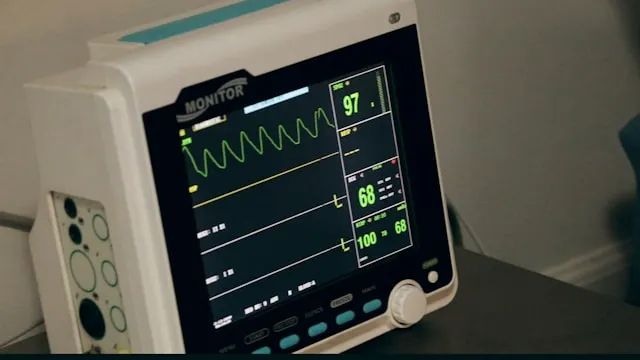What you eat could be raising your blood pressure without you knowing. You might enjoy salty snacks, canned food, or even a chilled soft drink, but these foods could be working against your heart.
High blood pressure is often called the "silent killer" for a reason. No clear signs. No sudden warnings. But quietly, it adds stress to your heart, your kidneys, and your arteries.
The good news? Food is not just the cause. It can also be the solution. When managed right, your daily meals can help you keep your blood pressure in check.
If you want to maintain a healthy BP level, you need to stay away from food items that contain excess sodium, saturated fats, and added sugars.
Let’s now go into the 10 foods to avoid for high blood pressure, so you can take control of what goes on your plate and what stays out.
Avoid These 10 Foods to Control High Blood Pressure
1. Alcohol – Not Worth the Buzz
Alcohol might help you relax for a few hours, but it can raise your blood pressure for much longer. Regular drinking narrows your blood vessels and increases your heart rate. Beer and wine, despite their antioxidants, still add more risk than benefit if consumed often.
If you really must drink, stay within limits. For most adults, one drink a day is the upper limit. Skipping it altogether? Even better.
2. Canned Food – Packed with Hidden Salt
Canned vegetables, beans, and soups are convenient, but their convenience comes at a cost. Most canned foods contain preservatives and a chemical coating called BPA, which is linked with hormone imbalance. But the bigger issue here is salt.
Even if the food inside seems healthy, the sodium used for preservation can be alarmingly high. Always rinse canned items before use, or better, choose fresh alternatives.
3. Instant Soup – Quick Comfort, Lasting Damage
Instant or pre-made soups are loaded with sodium. Just one small bowl can cover nearly half your daily sodium intake. Brands promote them as low-calorie, but they often skip mentioning the salt content.
Try making fresh soup at home. Use less salt and more herbs for flavour. Homemade always wins.
4. Red Meat – Heavy on Heart, Hard on Pressure
Eating red meat daily can increase BP. Why? It contains saturated fats that raise cholesterol levels and contribute to artery blockages. This forces your heart to pump harder.
You don’t need to quit meat altogether. Just limit red meat to once or twice a week. Choose lean cuts and avoid processed meat entirely.
5. Bacon – Fat and Salt in Every Bite
Each slice of bacon may seem small, but the fat and sodium it contains are not. One piece can have more salt than you think. It’s also loaded with saturated fats that increase your blood pressure.
If you still want that crispiness on your plate, try turkey bacon or grilled paneer as a low-fat option.
6. Cheese – Not So Soft on Pressure
Cheese is delicious, but also dangerous for those with high BP. It contains salt and saturated fat in large amounts. Even a small cube can sneak in more sodium than a handful of chips.
Try cottage cheese (paneer) in moderation. Or switch to low-sodium versions if you can't go without it.
7. Frozen Food – Convenience With Consequences
Frozen pizza, burger patties, and nuggets might save you time, but they add salt, fat, and preservatives to your body. One frozen meal can contain nearly your full day’s salt quota.
Cook extra food at home and freeze it. That way, you get the ease of frozen food, but without the chemicals.
8. Whole Milk – Too Creamy for Comfort
Yes, milk has calcium, but whole milk has saturated fat that can raise cholesterol. High cholesterol clogs arteries and increases BP. Each glass can contain more fat than a deep-fried snack.
Switch to toned or skimmed milk. Same nutrients, less fat.
9. Pickles – Too Much Salt in a Small Bite
Pickles are soaked in salty water. This makes them high in sodium, no matter how small the portion. Having them daily with meals can increase your blood pressure even if your main dishes are healthy.
Use fresh chutneys or mint dips instead.
10. Sugary Foods – Sweet Outside, Harmful Inside
Cakes, candies, and fizzy drinks seem harmless, but sugar increases weight, cholesterol, and insulin resistance, all of which raise BP.
When sugar enters the bloodstream, it causes inflammation in the blood vessels. This inflammation narrows arteries and pushes BP up. If you want something sweet, go for fruit. It has fiber and natural sugar that your body can handle better.
Comparison Table: Foods That Can Raise Blood Pressure
Food Item | Main Reason to Avoid | Healthier Swap |
Alcohol | Raises heart rate and narrows vessels | Lime juice, coconut water |
Canned Foods | Loaded with sodium and preservatives | Fresh or frozen vegetables |
Instant Soup | Excess salt per serving | Homemade vegetable soup |
Red Meat | High saturated fat and cholesterol | Grilled chicken or tofu |
Bacon | Rich in fat and sodium | Roasted chickpeas or paneer |
Cheese | High sodium + saturated fat | Low-fat paneer, curd |
Frozen Foods | Processed and salt-loaded | Home-cooked meals in batches |
Whole Milk | Full of saturated fats | Skimmed or low-fat milk |
Pickles | Preserved in salty brine | Fresh mint chutney |
Sugary Foods | Promotes weight gain and insulin resistance | Fruits, dry fruits without sugar |
What Spices Can Replace Salt in Your Meals?
You can flavour food without salt using Indian spices. Turmeric, coriander powder, black pepper, cumin, cinnamon, and even dry mango powder can enhance taste without adding sodium. Lemon juice and curry leaves also work well.
Best Cooking Oils for Blood Pressure Patients
Choose oils that are low in saturated fat and high in good fats. Mustard oil, olive oil, and rice bran oil are better than palm oil or vanaspati. Avoid reheating oils. Stick to minimal oil cooking methods like roasting or grilling.
What is the DASH Diet?
The DASH Diet (Dietary Approaches to Stop Hypertension) is a proven meal plan designed to reduce blood pressure naturally. It emphasizes fresh fruits, vegetables, whole grains, and low-fat dairy. It reduces intake of saturated fats, red meats, and sweets. It also limits sodium and processed food.
This diet works not just for BP but also for managing weight and heart health. It’s balanced, flexible, and perfect for long-term results. DASH diet encourages eating more potassium, calcium, and magnesium, all of which play a role in keeping blood pressure levels steady.
Choose dal, sabzi, and chapati over processed snacks.
Drink two glasses of water before meals to reduce overeating.
Use lemon juice or herbs instead of salt for taste.
Eat seasonal fruits daily; banana, orange, and guava are great picks.
Walk for 30 minutes after dinner instead of sitting with the TV or your mobile.
Always check food labels for salt content before buying packaged foods.
Keep roasted seeds or sprouts as evening snacks instead of namkeen.
Here’s something important: foods with less than 5% of the daily value for sodium are low in salt. Anything with 20% or more? That’s high.
Final Thoughts
High blood pressure is not always caused by age or genetics. Sometimes, it starts from your own kitchen. The processed food, the evening snacks, the extra pinch of salt, it all adds up. But the good part? You have full control.
You can make small but smart changes. Say no to the 10 food types mentioned above. Watch your labels. Cook at home more often. Use natural flavouring instead of salt.
Start today. Don’t wait for a doctor's warning to change your habits. Your heart is already working hard; make it easier by watching what’s on your plate.
Frequently Asked Questions
Can I eat eggs if I have high blood pressure?
Yes, but in moderation. Egg whites are rich in protein and safe. Limit yolks due to cholesterol.
Are bananas good for BP?
Yes, bananas are rich in potassium, which helps balance sodium in your body and lowers BP.
Is black coffee okay for high BP?
In small amounts, yes. But too much caffeine can temporarily increase BP, so limit intake.
Should I avoid salt completely?
No, but keep it very low. Choose natural salts and monitor packaged food sodium levels.
How often should I check my blood pressure?
If diagnosed, check at least twice a week. If not, monitor monthly or as advised by your doctor.

Reviewed by







